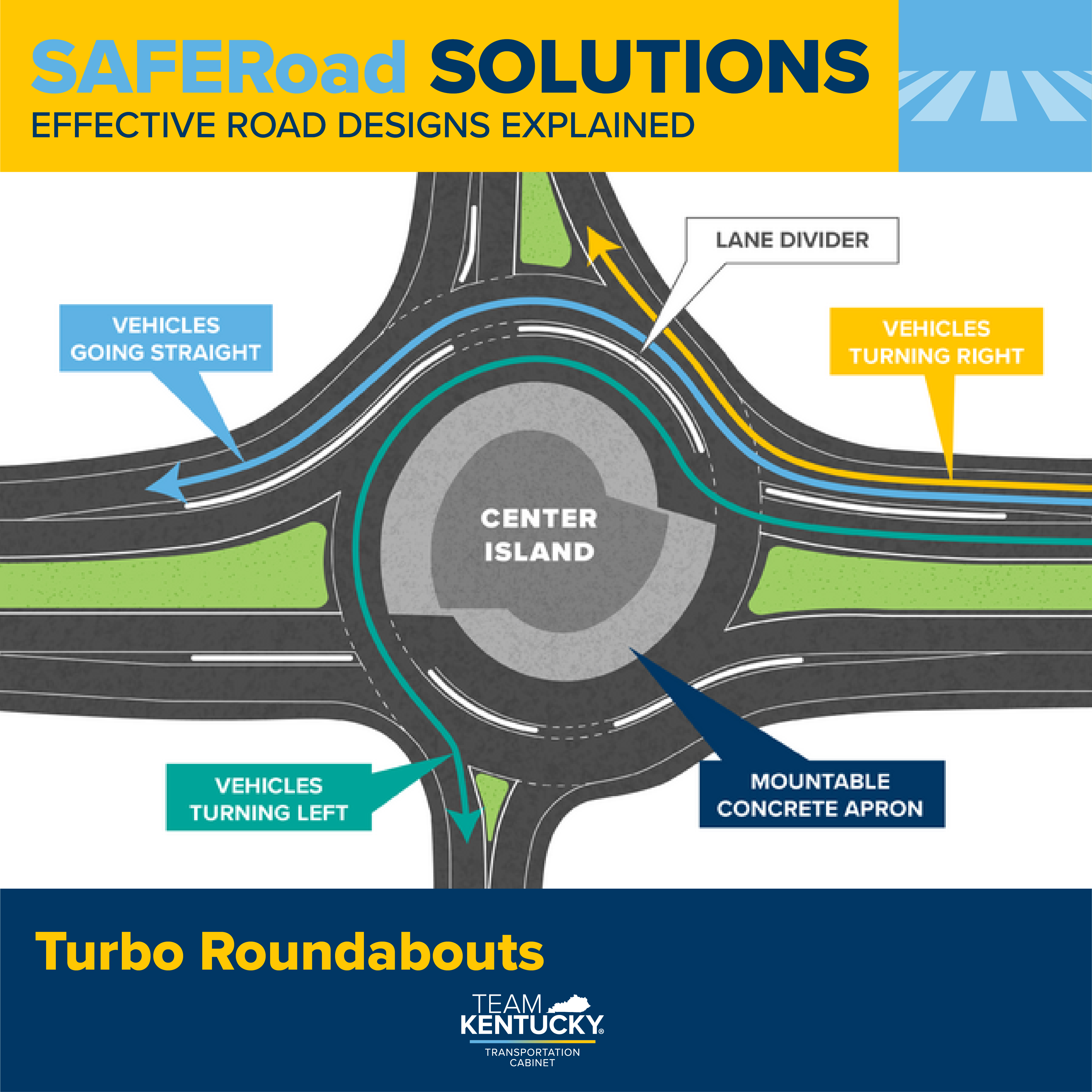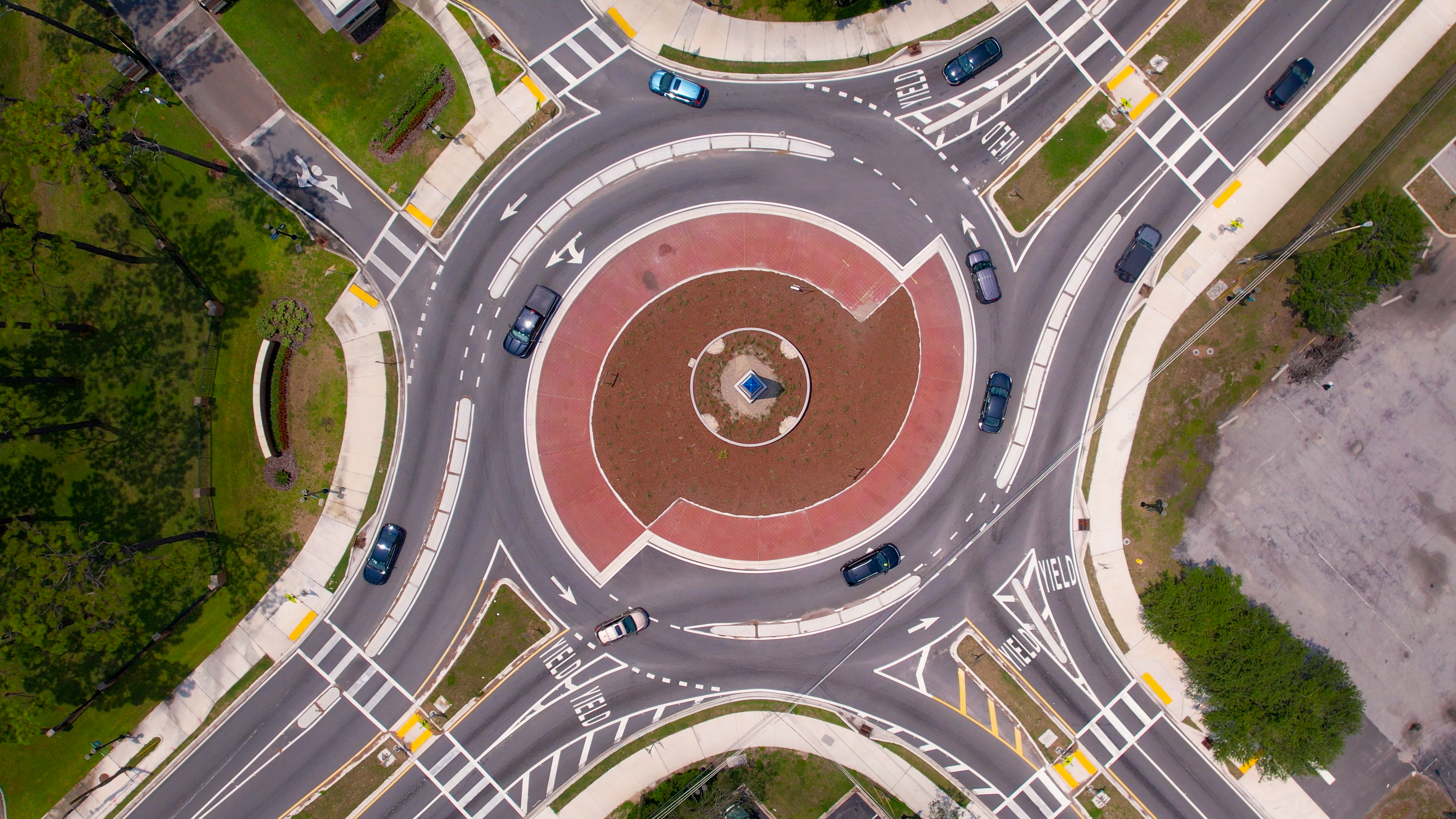
Unlike traditional roundabouts, turbo roundabouts' lanes are separated by raised channel islands that help guide vehicles into specific lanes. This prevents vehicles from drifting or shifting between lanes. The channel islands have incremental openings to allow space for vehicles to enter and exit the roundabout. Motorists should not use these openings to change lanes within the roundabout.
When approaching a turbo roundabout, motorists should pay special attention to signs and pavement markings that indicate which lane corresponds to their exit leg. This is important because once within the roundabout, drivers will be unable to change lanes.
Benefits of Turbo Roundabouts
Turbo roundabouts possess many of the same benefits as roundabouts. They are safer than conventional intersections because they reduce vehicle speeds and eliminate the risk of dangerous t-bone and head-on collisions. They are also more efficient than conventional intersections because vehicles can continuously move through the roundabout, which allows for increased capacity.
How To Use a Turbo Roundabout
Motorists can navigate a turbo roundabout by following four simple steps:
-
Slow down – As motorists approach a roundabout, they should slow down to the advised speed and prepare to stop if necessary.
-
Be ready to yield – Just before entering a roundabout, motorists should watch for – and yield to – pedestrians in the crosswalk or bicyclists. Also, motorists should give the right-of-way to vehicles that are already in the roundabout, approaching from the left.
-
Stay In the correct lane – Motorists should get in the appropriate lane well in advance of the intersection. Signs will always show which lanes can be used for different turns. Lanes are channelized so motorists cannot change lanes within the roundabout.
-
Do not stop within a turbo roundabout – Motorists should not stop, even if they miss their exit. Instead, they should continue around the circle and attempt the intended exit again.
Turbo Roundabout Examples
There are currently no turbo roundabouts located in Kentucky, but they will be coming soon!
The below photograph shows an example of a turbo roundabout that is in Jacksonville, Florida.

